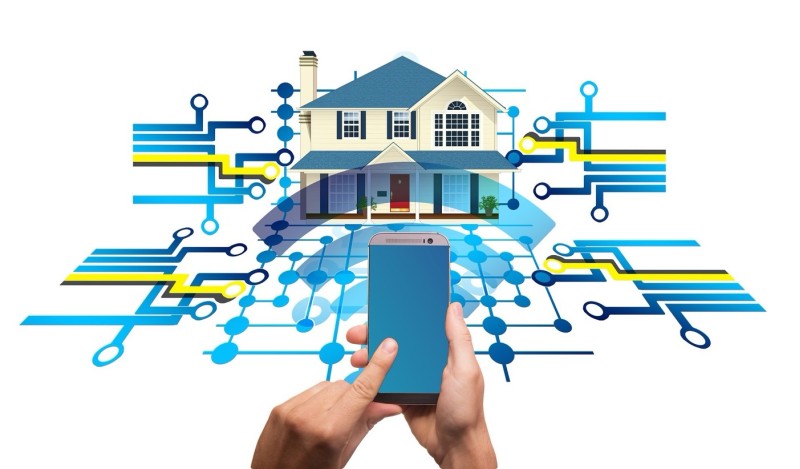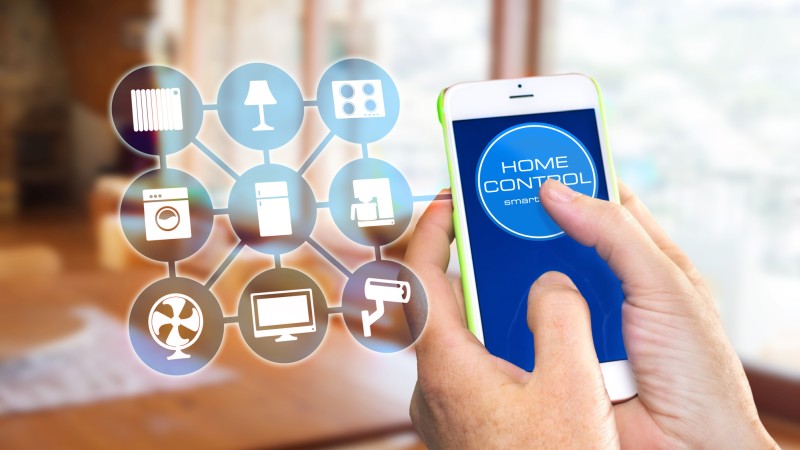The reasons for installing a smart homes automation system are many. From enhanced surveillance to video doorbells, a smart home system makes your living way more enjoyable.

You cannot feel at ease without a smartphone, a fitness tracker, an Amazon Echo etc. Their presence and assistance greatly increase your comfort levels and let you stay highly productive throughout the day.
All of these devices belong to the IoT network concept which continues to grow at a steady pace now comprising over 31 billion devices in total.
Being driven by the desire to simplify and enhance their daily life, humans get addicted to the IoT technology that allows automating routine processes, making them less time-consuming and easier to perform.
The concept of a smart home is not new to users, but its application is only taking off. With metropolitan areas being at the forefront of IoT implementation, the major benefit of using smart IoT systems is managing all home devices from one place.
Here are 7 main ways of how IoT home automation can improve the quality of your life.
-
Smart Lighting
The appeal of smart lighting in a home environment lies in extreme responsiveness to your movements and habits in general. What distinguishes smart lights from regular ones is that they adjust to the room environment and change their brightness depending on how much lighting is needed at the moment.
For instance, when you are watching a movie at night, smart lighting is likely to reduce its intensity to create a pleasant atmosphere for your rest.
The IoT technology allows you to schedule the work of lights, set the color, as well as control lighting remotely through the app.
The ability to dim or turn it off lets you reduce energy consumption and avoid eye strain that typically results from blue light exposure.
-
Heating system
The control over your home temperature can substantially improve your well-being, especially in extremely hot or cold weather.
The thermostat lets you regulate the house temperature raising or lowering the degrees to achieve an ideal home environment.
This feature is of much use when you are coming back home and can start heating your place an hour before reaching it with the help of your app.

This way you do not need to wait until your house gets heated up as well as you do not have the heating system continuously working in your absence.
Moreover, many thermostats allow you to change the temperature in every single room depending on your preferences.
For example, the degrees in your living room can be somewhat higher than in your bathroom that may not need additional heating.
-
Video doorbell
A video doorbell is a remarkable feature of smart home automation. It has a built-in camera which allows you to see your visitors with your app before greeting them at the door as well as open the door without approaching it directly.
Smart video doorbells also enable you to supervise your house and hence increase the level of home security when you are away.
Besides, some doorbell systems are designed to monitor everyone being within the area of 30 feet from your door.
Since they support facial recognition technology, you can be aware of who is trying to reach out to you while you are not at home.
-
Smart Electronics
The appeal of home automation is also connected to the ease of using electrical devices and appliances. Smart home technology lets you turn on and off electronics using your smartphone, which is rather convenient if you seek to spend the least time doing house chores.
It is possible to program a coffee machine to make a coffee 10 minutes before you wake up or to schedule a washing machine to do your laundry while you are on a trip at the weekend. Besides, you can check the electronics anytime on your app, which minimizes the risk of hazards, such as fire, flood, etc.
-
Voice control
Plenty of home automation systems are run with a virtual assistant that interacts with an owner through voice messages.
It is the best option for dwellers to manage housekeeping quickly as they can be occupied with other activities while giving instructions to the smart home assistant.
As an alternative, all IoT devices can be simply scheduled with an app. The recent trends in IoT software development are remarkable for the active use of fingerprint recognition which verifies you as the only person who can control smart home devices. This control mode is least susceptible to cyber-attacks and hacking.
-
Uninterrupted surveillance
Remote surveillance is a distinct feature of home automation that greatly increases your home security. Every smart home app commonly supports notifications that are instantly activated if any device from your IoT network malfunctions or detects a danger inside or outside your house.
The surveillance system helps many people who are so concerned about their home safety feel less anxious as they can check every room and device remotely anytime and make sure everything is normal.
-
Sustainability
Finally, IoT home automation is one of the ways to reinforce sustainability practices. Since smart home systems provide an opportunity to regulate the amount of energy to use, it leads to lower consumption levels, which eventually ensures improvements to the environment and the economy as a whole.
With full control over the energy and its consumption, it is easier for everyone to be thoughtful of the resources they exploit and make a difference on a global level.
About the author:

Kyle McDermott is a web developer, blogger, blockchain enthusiast, and business analyst. He loves to write about new technologies, business news, and sports events. Kyle is also a proofreader at Computools. Follow him on Twitter.
Leave a Reply